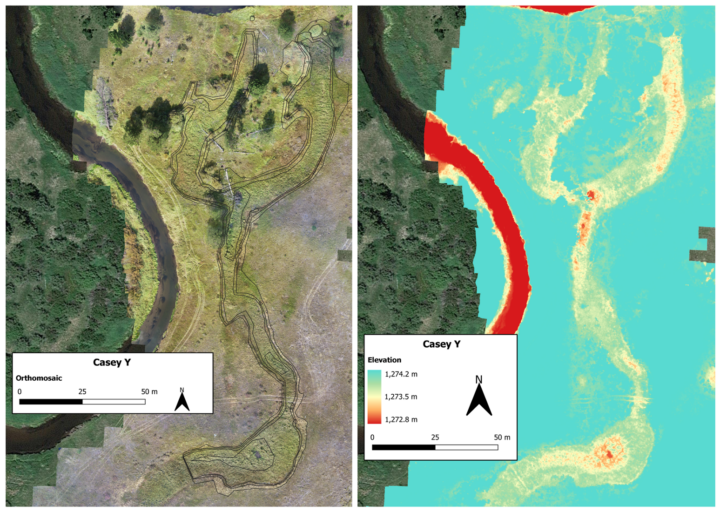Oregon Spotted Frog Habitat Suitability Analysis
Implementation of the Deschutes Basin Habitat Conservation Plan (HCP) began in 2020 with the goal of mitigating the incidental take of several ESA-listed species in the Deschutes Basin of Oregon, including the Oregon spotted frog. MHE has been working with the Deschutes Basin Board of Control and U.S. Fish and Wildlife Service to conduct monitoring and research that supports the HCP.
The Oregon spotted frog relies on wetlands throughout the lands covered by the HCP, many of which are seasonally inundated. Habitat suitability analyses are required under the HCP and is an important tool to identify restoration opportunities and seasonal habitat availability. In 2022, MHE conducted a habitat suitability assessment at a large oxbow complex along the Little Deschutes River. The goal of this assessment was to map and delineate vegetation community types, breaks, and relative elevations of off-channel breeding habitats. Additionally, this study identified locations and total area of invasive reed canary grass within high-use breeding areas. This effort included three major components:
(1) UAV remote sensing to capture high-resolution imagery
(2) Vegetation surveys to map community types and breaks within selected habitats
(3) Photogrammetric processing and analysis
The photogrammetric, elevational, and vegetation data collected for this assessment can be used to establish a functional relationship between surface water and habitat area as well as support future restoration of critical habitat or the Oregon spotted frog. Future monitoring of habitat suitability throughout the covered lands is expected to continue for the 30-year term of the HCP.

